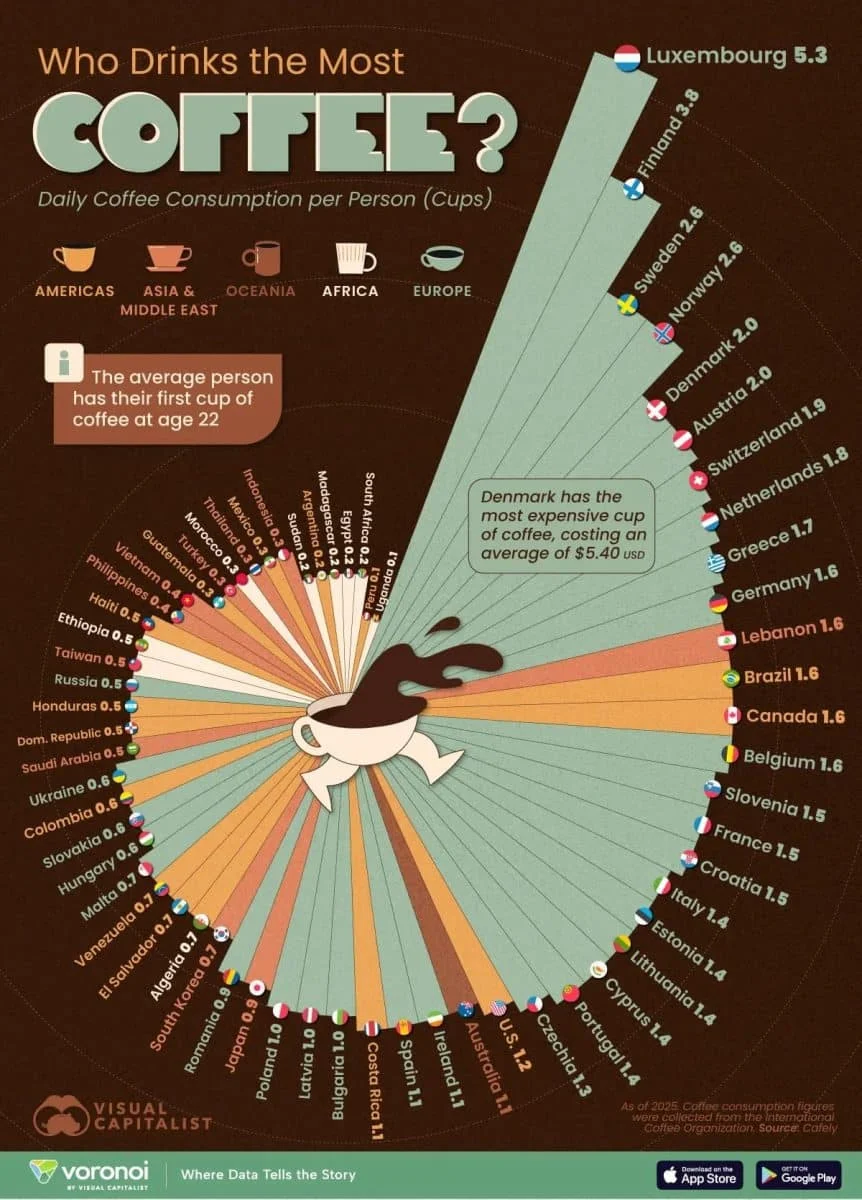
The global coffee market has demonstrated steady growth in recent years. However, the attitude towards coffee, the amount of coffee consumed, and daily habits vary dramatically from country to country. Coffee culture is particularly deeply rooted in Northern Europe, which maintains global leadership in per capita consumption.
The new infographic, based on data from Cafely, ranks 65 countries in terms of daily coffee consumption per capita in 2025, and the results at a glance show how global consumption patterns differ.
Luxembourg - first place where taste and possibilities are combined
In the ranking, Luxembourg surpassed all countries, becoming the absolute leader with a daily consumption of 5.31 cups per person. This indicator, along with the high incomes of the country's population, is also explained by the phenomenon of "cross-border." Because almost half of the working people in Luxembourg - 47 percent - live outside the country, and their coffee consumption is also included in the general statistics.
Finland and Sweden, with strong coffee cultures, are also among the leaders
Coffee traditions in Northern Europe are so strong that all the top ten countries in the ranking are European countries. Finland and Sweden also lead with high consumption rates. This is due not only to the historically formed preferences of taste, but also to the high purchasing power of the region.
Large markets, small indicators: USA, Japan and Brazil
Despite being the world leader in absolute consumption, countries with a large population are significantly lower in per capita indicators:
- USA - 1.22 cups per day (24th place)
- Japan - less than 1 cup
- Brazil - 1.58 cups per day (18th place)
Despite being the world's largest coffee producer, Brazil maintains average domestic consumption figures. Russia is in 46th place with 0.5 cups per day.
The bottom of the ranking: countries where tea, not coffee, prevails
At the bottom of the ranking are mainly countries with large tea counts. India has the lowest rate in the world - only 0.02 cups per day, which is approximately one cup every 7 weeks. Most countries in Africa and South Asia also consume less than 0.3 cups of coffee per day.

Conclusion
The infographic highlights the fundamental differences in the world's coffee culture:
in which countries coffee is an integral part of lifestyle, in others tea or local drinks still dominate.
At the same time, the growth of the coffee market indicates an increase in the number of consumers on a global scale - even in regions with low consumption, this market is growing, albeit slowly.
Read “Zamin” on Telegram!Users of Меҳмон are not allowed to comment this publication.














